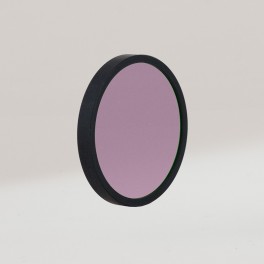 Ingrandisci
Ingrandisci Filtro Astronomik ASUHC31 da 31mm
Astronomik
- Rimuovi questo prodotto dai miei preferiti
- Aggiungi questo prodotto ai miei preferiti.
- Stampa
Astronomik ASUHC31 - UHC Filter 31 mm, round, unmounted, protective ring
 Ingrandisci
Ingrandisci Astronomik ASUHC31 - UHC Filter 31 mm, round, unmounted, protective ring
Codice articolo: 8h00i0
![Astronomik ASUHC31 - UHC Filter 31 mm, round, unmounted, protective ring [EN] Astronomik ASUHC31 - UHC Filter 31 mm, round, unmounted, protective ring [EN]](https://www.teleskop-express.it/img/cms/astronomik_uhc_31mm-round_base.jpg)
You will enjoy using your Astronomik UHC filter because you will see more stars and more details in deep-sky objects compared to using filters from all other manufacturers.
The Astronomik UHC (Ultra High Contrast) filter allows the transmission of nearly 100% of the radiation from both [O III] and the H-beta lines. Though the second window for the H-alpha line is not intended for visual observing, it is important, if the filter is used with an electronic device. All annoying, scattered light from other wavelength sources, including local artificial light pollution, is reliably filtered out. With this strong blocking of the sky background an unexpected wealth of detail becomes visible for gas nebulae and planetary nebulae.
Main use:
Astronomik UHC filters' astounding high light transmission brings better views of deep-sky objects even to small telescopes! The high transmission of our optical glass filters means that enough light is available to allow successful visual observations with telescopes beginning at 2" (50 mm) aperture. Our Astronomik filters are optimized for use with telescope focal length f/-ratios of f/3 to f/15. Transmission losses and chromatic distortions, which arise with other filters, only occur with Astronomik filters when extremely bright aperture ratios of 1:2 and more come into play. Another major advantage of our Astronomik UHC filter is the high optical quality of the filter glass. When using Astronomik UHC filters you will quickly notice the same needle-sharp stars which you are familiar with from your astronomical instrument without any filter!
Suitability:
♦ Visual observation (dark skies): Very good, for telescopes of all apertures and high exit pupil
♦ Visual observation (urban skies): Very good, for telescops from 100 mm aperture
♦ Film photography: Reasonable, but very long exposure time
♦ CCD photography: Good, when used with an additional IR-block filter
♦ DSLR photography (original): Good, colour balance shifted but contrast enhanced
♦ DSLR photography (astro modified): Very good, colour balance is near perfect
♦ DSLR photography (MC modified): Good, when used with an additional IR-block filter
♦ Webcam / Video (Planets): Unsuitable
♦ Webcam / Video (Deep Sky): Good, if light pollution is a big problem
Transmission curve:
![Astronomik ASUHC31 - UHC Filter 31 mm, round, unmounted, protective ring [EN] Astronomik ASUHC31 - UHC Filter 31 mm, round, unmounted, protective ring [EN]](https://www.teleskop-express.it/img/cms/astronomik-uhc-kurve1.jpg)
♦ The horizontal axis is the Wavelength in Nanometers (nm). 400 nm is deep blue, at 520 nm the human eye senses green and at 600 nm red. At 656 nm is the famous "H-Alpha" emission line of hydrogen.
♦ The transmission in % is plotted on the vertical axis.
♦ The red line shows the transmission of the filter.
♦ Visual filters: The grey line in the background shows the relative sensitivity of the human eye at night. The maximum is at ~510 nm and drops to longer and shorter wavelengths. You can easily see, that you can´t see anything of the H-alpha line at night (even if you can during daylight!) The sensitivity at 656 nm is 0% at night!
♦ Photographic filters: The grey line in the background shows the sensitivity of a typical CCD sensor.
♦ The most important artifical emission lines are shown in orange. The artifical light pollution is dominated by see mercury (Hg) and sodium (Na), which are used in nearly all streetlights.
♦ The most important emission lines from nebulas are shown in green. The most important lines are from ionized Hydrogen (H-alpha and H-beta) and double ionized oyxgen ([O III]). The square brackets show that these lines are forbidden.
